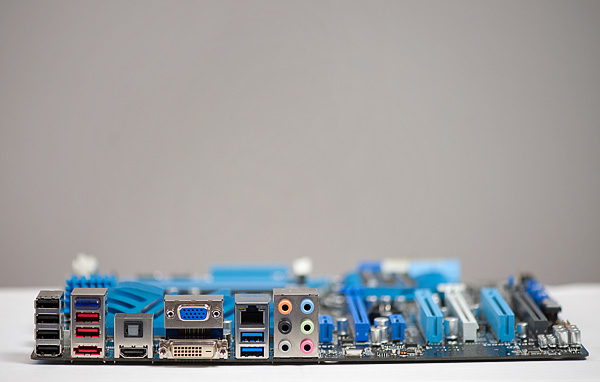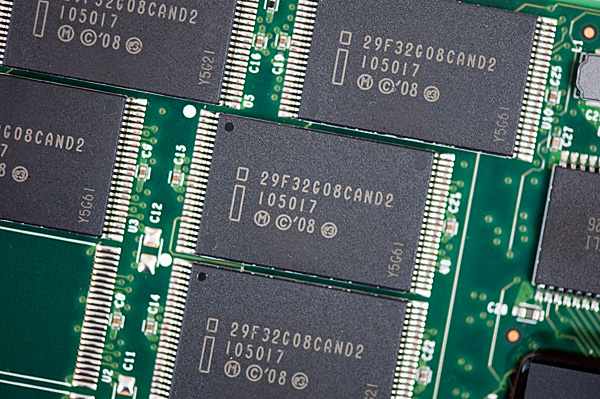Intel Z68 Chipset & Smart Response Technology (SSD Caching) Review
by Anand Lal Shimpi on May 11, 2011 2:34 AM ESTFinal Words
Intel's Z68 should have been the one and only high end launch chipset offered with Sandy Bridge. It enables all of the configurations we could possibly want with Sandy Bridge and does so without making any sacrifices. Users should be able to overclock their CPU and use integrated graphics if they'd like. While Z68 gives us pretty much exactly what we asked for, it is troubling that we even had to ask for it in the first place. With Intel holding onto a considerable performance advantage and a growing manufacturing advantage, I am worried that this may be a sign of things to come. It was strong competition from AMD that pushed Intel into executing so flawlessly time and time again, but it also put Intel in a position where it can enforce limits on things like overclocking. Let's hope that Z68 corrected a mistake that we won't see repeated.
Intel's Smart Response Technology (SRT) is an interesting addition to the mix. For starters, it's not going to make your high end SSD obsolete. You'll still get better overall performance by grabbing a large (80-160GB+) SSD, putting your OS + applications on it, and manually moving all of your large media files to a separate hard drive. What SRT does offer however is a stepping stone to a full blown SSD + HDD setup and a solution that doesn't require end user management. You don't get the same performance as a large dedicated SSD, but you can turn any hard drive into a much higher performing storage device. Paired with a 20GB SLC SSD cache, I could turn a 4-year-old 1TB hard drive into something that was 41% faster than a VelociRaptor.
If you're building a system for someone who isn't going to want to manage multiple drive letters, SRT may be a good alternative. Similarly, if you're building a budget box that won't allow for a large expensive SSD, the $110 adder for an Intel SSD 311 can easily double the performance of even the fastest hard drive you could put in there. The most obvious win here is the lighter user that only runs a handful of applications on a regular basis. As our tests have shown, for light workloads you can easily get the performance of an X25-M G2 out of a fast hard drive + an SSD cache. Even gamers may find use in SSD caching as they could dedicate a portion of their SSD to acting as a cache for a dedicated games HDD, thereby speeding up launch and level load times for the games that reside on that drive. The fact that you can use any SSD as a cache is nice since it gives you something to do with your old SSDs when you upgrade.
I believe there's a real future in SRT, however it needs to be available on more than just the highest end Sandy Bridge motherboards. I'd like to see SSD caching available on all Intel chipsets (something that we'll get with Ivy Bridge and the 7-series chipsets next year), particularly on the more mainstream platforms since that appears to be the best fit for the technology. I would also prefer a larger cache drive offering from Intel (at least 40GB) as it wasn't that difficult to evict frequently used programs from the SSD cache. The beauty of NAND is that we'll of course get larger capacities at similar price points down the road. Along those lines I view SRT as more of a good start to a great technology. Now it's just a matter of getting it everywhere.












106 Comments
View All Comments
davidgamer - Wednesday, May 11, 2011 - link
I was wondering if it would still be possible to do a RAID set up with SRT? For example I would probably want to do a RAID 5 set up with 3 3TB drives but also have the cache enabled, not sure if this would work though.hjacobson - Thursday, May 12, 2011 - link
RE: Z68 capable of managing SRT and traditional RAID at the same time?I've looked for an answer to this without success.
I did find out the H67 express chipset can't manage more than one RAID array. I won't be surprised to learn the same for the Z68. Which is to say, your choice: either SRT or traditional RAID, but not both.
Sigh.
jjj - Thursday, May 12, 2011 - link
" I view SRT as more of a good start to a great technology. Now it's just a matter of getting it everywhere."It actually doesn't have much of a future,so ok Marvell first made it's own chip that does this,now Intel put similar tech on Z68 but lets look at what's ahead.As you said NAND prices are coming down and soon enough SSDs will start to get into the mainstream eroding the available market for SRT while at the same time HDD makers will also have much better hybrid drives.All in all SRT is a few years late.
HexiumVII - Thursday, May 12, 2011 - link
What happens if we have an SSD as a boot drive? Would it recognize it as an SSD and only cache the secondary HDD? It would be nice to have that as my boot SSD is only 80GB and my less frequent used progs are in my 2teras. This is also great for upgraders as now you have a use for your last gen SSD drives!Bytown - Thursday, May 12, 2011 - link
A feature of the Z68 is that any SSD can be used, up to 64GB in size. Anandtech does the best SSD reviews I've read, and I was dissapointed to not see some tests with a larger cache drive, especially when there were issues with bumping data off of the 20GB drive.I think that a larger cache drive will be the real life situation for a majority of users. There are some nice deals on 30GB to 64GB drives right now and it would be great to see a review that tries to pinpoint the sweet spot in cache drive size.
irsmurf - Thursday, May 12, 2011 - link
Hopefully my next workstation will have SSD for cache and an HDD for applications storage. This will greatly shorten length of time required to transition to SSD in the workplace. A one drive letter solution is just what was needed for mass adoptation.Its like a supercharger for your hard drive.
GullLars - Thursday, May 12, 2011 - link
This seems like a good usage for old "obsolete" SSDs that you wouldn't use as a boot drive any more. I have a couple of 32GB Mtrons laying around, and while their random write sucks (on par with velociraptor sustained, but not burst) the random read at low QDs is good (10K at QD 1 = 40MB/s). I've been using them as boot drives in older machines running dual cores, but it could be nice to upgrade and use them as cache drives instead.It would be nice to see a lineup of different older low-capacity SSDs (16-64GB) with the same HDDs used here, for a comparison and to see if there's any point in putting a OCZ Core, Core V2, Apex, Vertex (Barefoot), Trancend TS, Mtron Mobi/Pro, Kingston V+, or WD Silicon Drive for caching duty.
Hrel - Thursday, May 12, 2011 - link
I'd like to see if using something like a Vertex 3 at 64GB would make much difference compared to using Intels 20GB SSD. Seems like it should evict almost never; so I'd expect some pretty hefty reliability improvements.marraco - Thursday, May 12, 2011 - link
Is only matter of time until SSD caching is cracked and enabled on any motherboard.ruzveh - Thursday, May 19, 2011 - link
Not so impressive as i would like it to be.